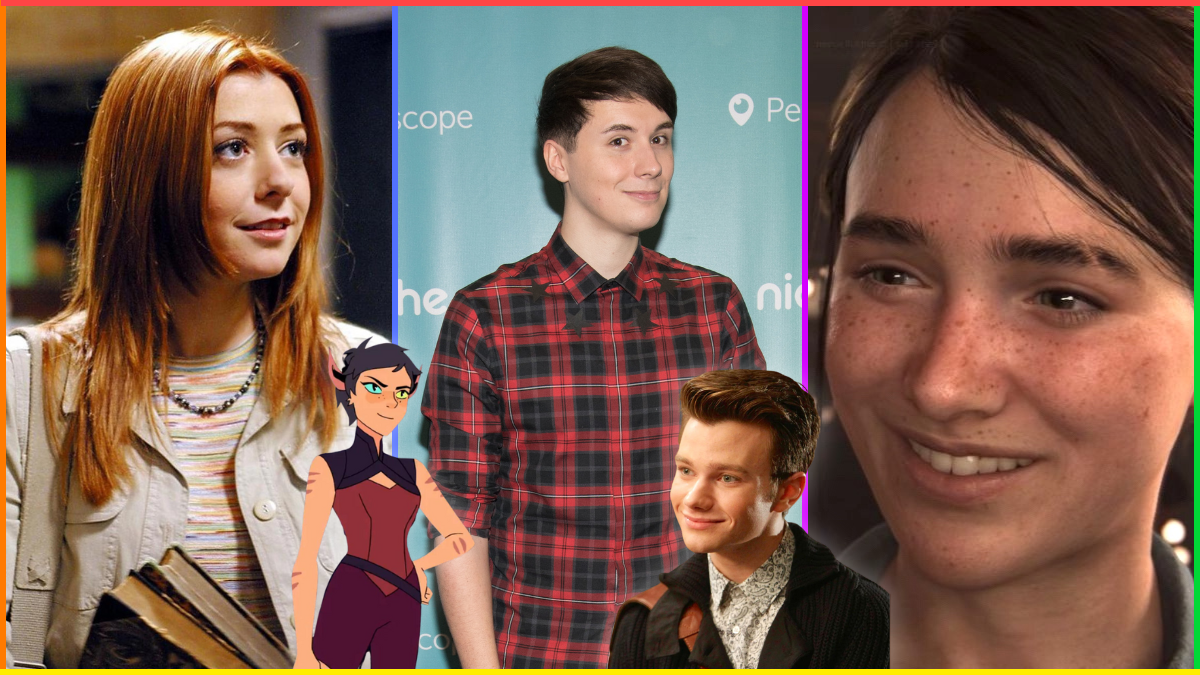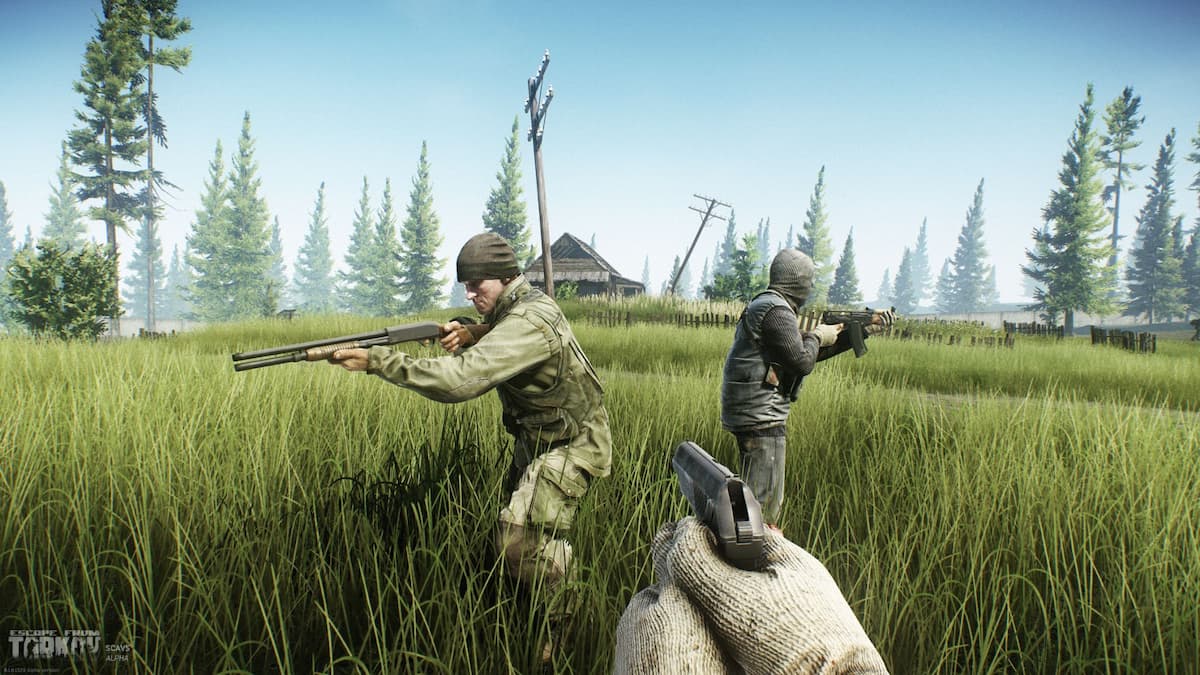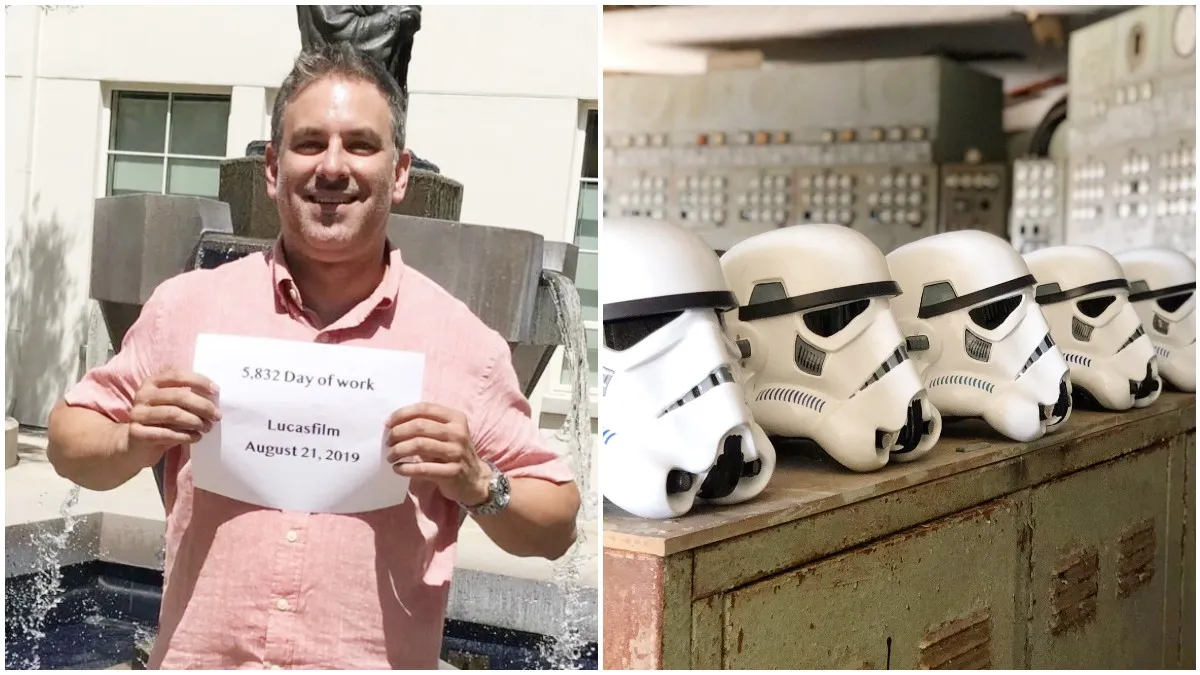In a world where everyone from individuals to government bodies have something say about other people’s sexual identities, there’s comfort to be taken in the recent embrace of the LGBTQ+ community by mainstream media. More and more companies emblazon their products and their branding with rainbows during Pride month, while studios like Marvel and Disney grow increasingly comfortable putting queer characters front and center. Though the fight for equal rights is far from over, these public wins give voice to a community that has been historically swept under the rug — and the possibilities for a more accepting and inclusive world increase as more queer stories continue to be told.
As we celebrate the people, events, and performances that nurture this refreshing reality, it’s impossible to ignore the landmark moments in both big and small-screen offerings that have helped make it possible in the first place. We’ve already shared our favorite TV relationships featuring LGBTQ+ characters, so now we’re going to dive into 10 moments from movies, TV, games, and viral videos that didn’t just make a splash in their respective mediums, but profoundly influenced us as human beings.
Ellie X Dina — The Last of Us Part II
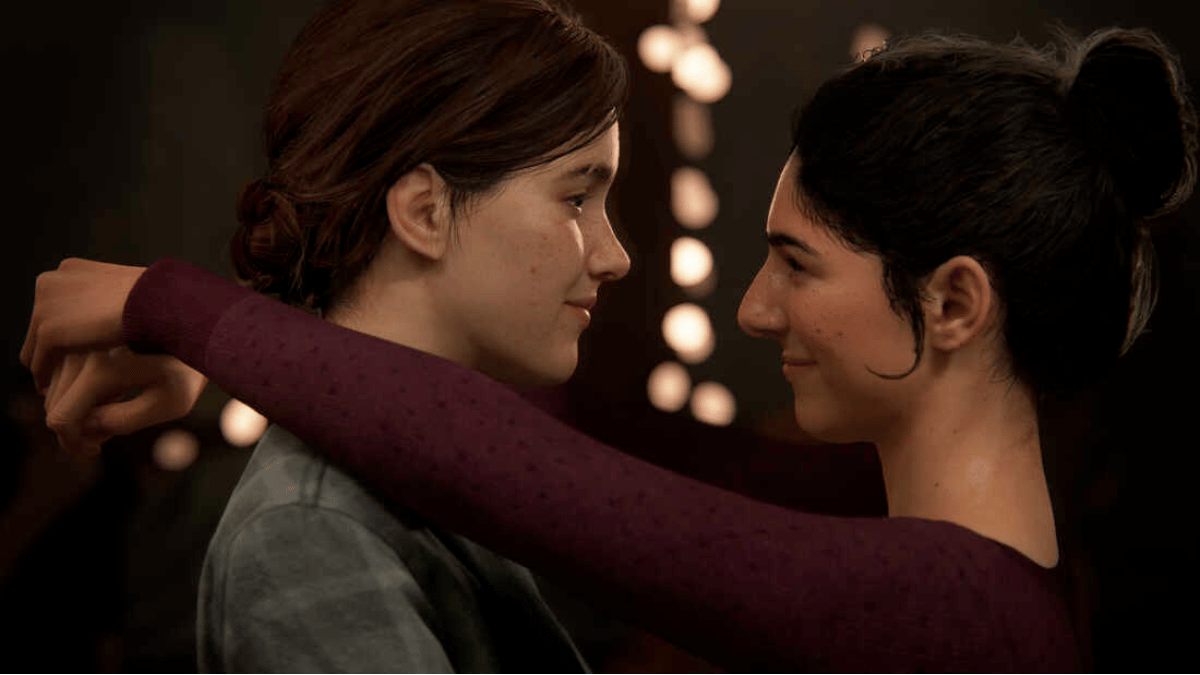
Stories have always meant a lot to me. That’s why I got into this career, after all, and why my arms are littered with various tattoos from my favorite stories. The latest, prepped to finally cover my right forearm? Ellie Williams’ iconic tattoo from The Last of Us Part II. The tattoo is likely to become far more popular over the next few years, as more and more people become Ellie fans thanks to HBO, but — despite some initial hesitation — I still plan to get the tattoo. Because, even if it’s not as unique as it once was, that tattoo — that character — means so much to me.
I fell in love with Ellie years ago, and her character arc in Part II only made that love grow. Discovering her relationship with Dina — a relationship that strengthens my connection to the character even more — cemented Ellie as one of the absolute best characters I’ve ever stumbled across, a fact that hasn’t changed in the years since the game first dropped. These two feel so wonderfully real, and their relationship genuinely affected me on a level I never would have expected. I think back on their first major moment — in that shack with a crusty old joint — frequently, recalling how myself, my fiancée, and my (also very gay) best friend cheered aloud when Ellie and Dina’s lips met. That’s the reaction you want from a relationship like this, and damn if it doesn’t give me the same butterflies today it did when I first laid eyes on it. ⏤ Nahila Bonfiglio
Adora & Catra’s kiss ⏤ She-Ra and the Princesses of Power
Even if you aren’t much of an animation fan, I’d bet any amount of money that you’ve heard of She-Ra and the Princesses of Power, the Netflix series that took the world by storm back in 2020. What many assumed would be an underwhelming, childish cartoon, touched the lives of so many LGBTQ+ viewers, specifically the lesbian community, which is so often shunned and forgotten about despite being the first letter in the acronym. When we first meet Adora and Catra, expectations are fairly low. There’s a typical BBF betrayal arc going on, which results in some cat-and-mouse conflict, but as the seasons progress, there’s something more beneath the surface with Adora and Catra.
Netflix handled the unraveling of this romance so beautifully that it brought a tear to my eye when I first saw it. We had waited for five seasons, but when Adora and Catra finally shared their first kiss, it suddenly became clear what love really stands for. Being gay isn’t about parading who you are for all to see; it’s about daring to be confident and loud and unashamed in a world that’s always knocking you down. Adora and Catra knew what it meant to care so deeply for another person that it nearly kills you, despite everyone telling them they shouldn’t. ⏤ Chynna Wilkinson
Jamie X Dani ⏤ The Haunting of Bly Manor
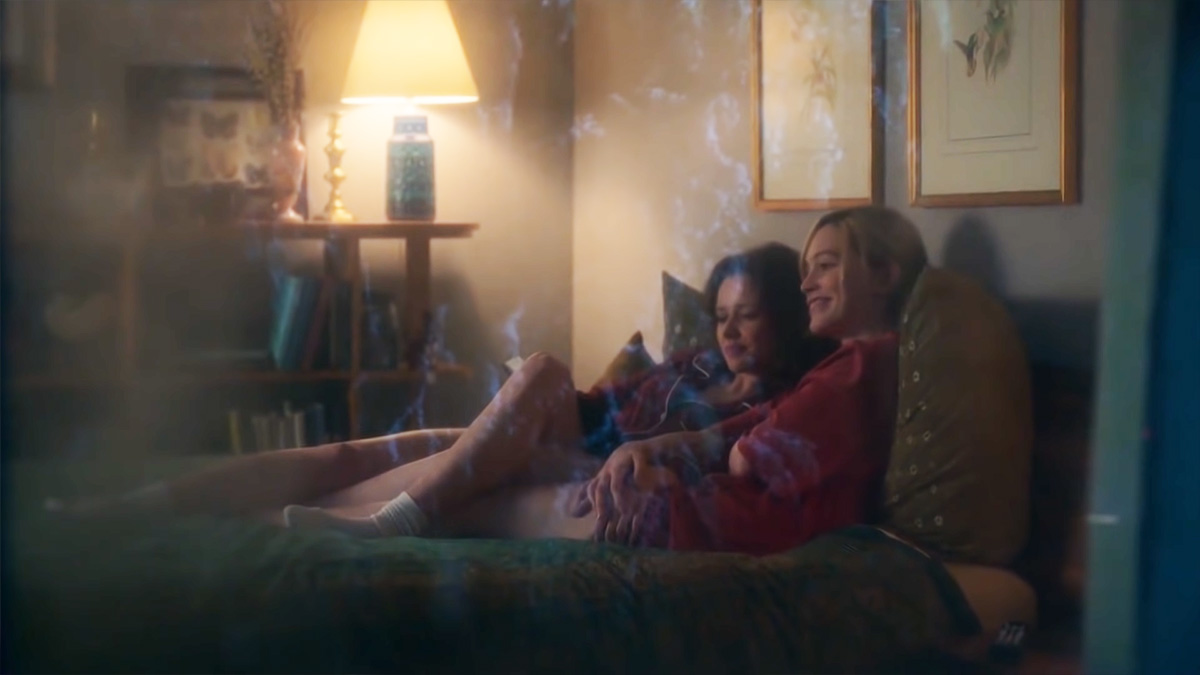
A tender romance isn’t the sort of thing you’d expect to find in a gothic horror, which is what makes The Haunting of Bly Manor so worth delving into. Queer representation in media so often revolves around the coming out story that it has, quite frankly, been done to death. But the way Bly Manor navigates the oh-so-familiar story is what makes this one resonates so well with me. Victoria Pedretti’s Dani never engages in the trite scene where she tearfully explains her sexuality to her family or her tiny wards. Instead, the only person Dani must make peace with is herself.
As a lifelong tomboy and someone who struggled with her sexuality and the idea of coming out ⏤ not because of how my family would likely react, but because of how I thought it would change who I was ⏤ the lesbian label was weaponized against me more times than I can count. Dani’s inner struggle resonated with me. Her self-imposed isolation and denial of who she was represents plenty of us. We may have loving families and thorough support groups at our disposal, but our greatest enemy comes from our own reluctance to pull back the veil on who we are.
There are plenty of queer people who may take umbrage with the season’s finale, but to me, the opening words of the series more than explain away the tragic end: “To truly love another person is to accept that the work of loving them is worth the pain of losing them.” We work to love others, sure, but first, we must do the work to love ourselves. ⏤ Ash Martinez
Korea and Asami’s relationship ⏤ The Legend of Korra
When I was younger, I never imagined being able to see an LGBT+ couple on family-friendly television. See, I was a pretty observant kid. I saw how adults spoke about LGBT+ people on television and I understood that our love and who we were was taboo. When I began to form romantic attractions of my own, it was shrouded in guilt and fear.
The Legend of Korra aired its finale on Dec. 19, 2014, and its final season was a digital-only release during a time when that was uncommon, so it received very little fanfare from Nickelodeon. But one moment was all anyone could discuss: wait, did Korra and Asami, two women, just get together at the end of the series? Isn’t this a kid’s show?
It wasn’t explicitly confirmed ⏤ the creators later had to confirm that, yes, Korra and Asami were in a relationship and that both were bisexual ⏤ but it was a moment that cracked something inside of me. I felt vindicated. What I had felt when I was just trying to come into my own ⏤ what I wanted to repress and hide ⏤ wasn’t, and had never been, dirty, bad, or inappropriate. I was 17, a senior in high school, and gay marriage wouldn’t be legalized nationwide until later that June. It’s one of those moments that reminds me of why I love film and television: even the smallest project can have the greatest impact on someone. ⏤ Daniel Pacheco
Daniel Howell’s coming out video
Daniel Howell has been my role model since my senior year of high school began in 2014. He inspired me to live the life that I wanted in this short existence that we have. In fact, he was aware that his videos and life lessons played a huge role in my life via Twitter. So when he released “Basically, I’m Gay” in 2019, after a year-long absence since his Interactive Introverts world tour, his video resonated with me a lot.
This was not just any ordinary coming out video. It’s a long explainer on internalized homophobia, school bullying, self-hate, mental health issues, and the lack of education affected someone as they were growing up. Some of the things he mentioned in his video were releatable to me when it comes to my own identity as asexual.
I think what I enjoyed the most about his coming-out video was how both he and I had the same method of coming out to our families ⏤ a family group email (or in my case, Facebook Messenger). Regardless, this video solidifies why Daniel was and always will be my role model, and how his video made me feel like I am not alone in this journey. ⏤ Erielle Sudario
Bridget’s gender identity journey ⏤ Guilty Gear -Strive-
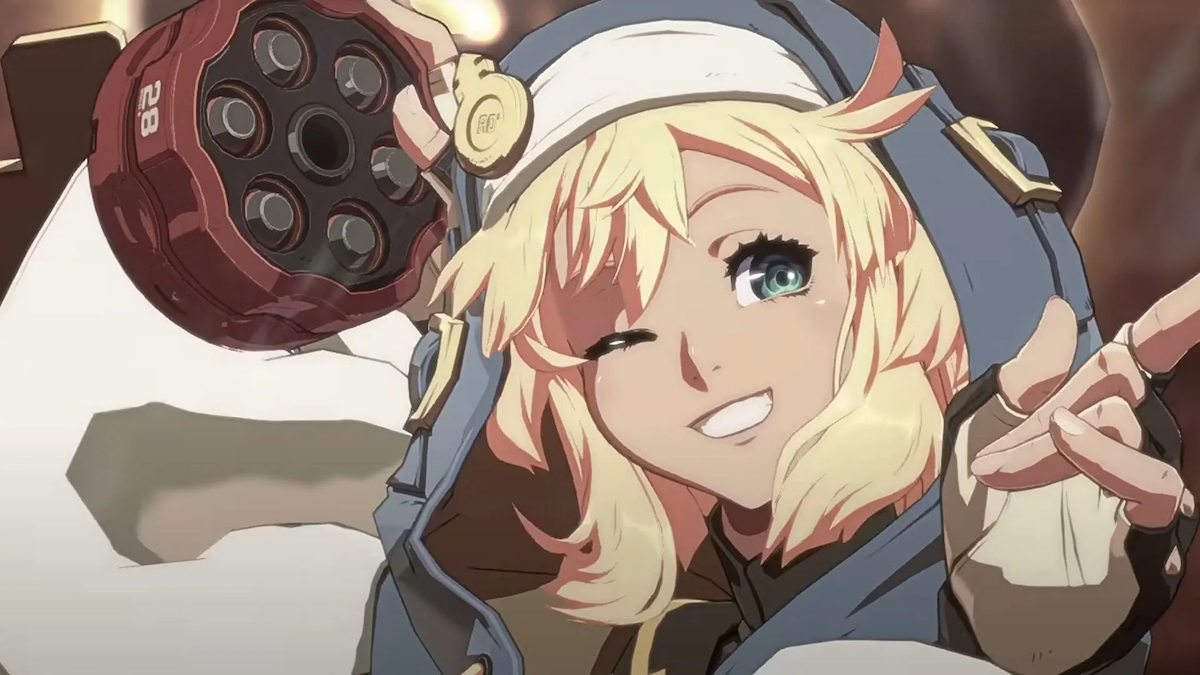
Bridget’s reintroduction in Guilty Gear Strive took me by surprise. A British bounty hunter dressed in a nun-like hoodie, Bridget’s story in Strive revolves around her coming to terms with her gender identity. Bridget was assigned male at birth but raised as a girl due to her village’s supernatural curse. After shrugging off her girlhood and identifying as a boy for a time, Bridget starts questioning her gender. Ultimately, Bridget comes to terms with her gender identity and concludes she is, in fact, a woman, with the game canonically referring to her with she/her pronouns.
Bridget’s entire coming-out narrative was so unique and different compared to what I’m used to in gaming. Yes, Bridget didn’t necessarily transition the way I did. No supernatural curses in American suburbia here. But her story arc spoke to me ⏤ all those themes about being true to yourself, and not holding yourself back from being who you need to be, it’s all truly beautiful stuff. Then there’s Bridget’s friendly, carefree, and tomboyish nature, which makes her such a lovable character, and also a particularly unique one for trans women. We’re rarely given the opportunity to be childlike, innocent, and silly. Bridget is all those things, and that makes her special. It also makes her really cool. ⏤ Ana Valens
Willow and Tara’s kiss ⏤ Buffy the Vampire Slayer
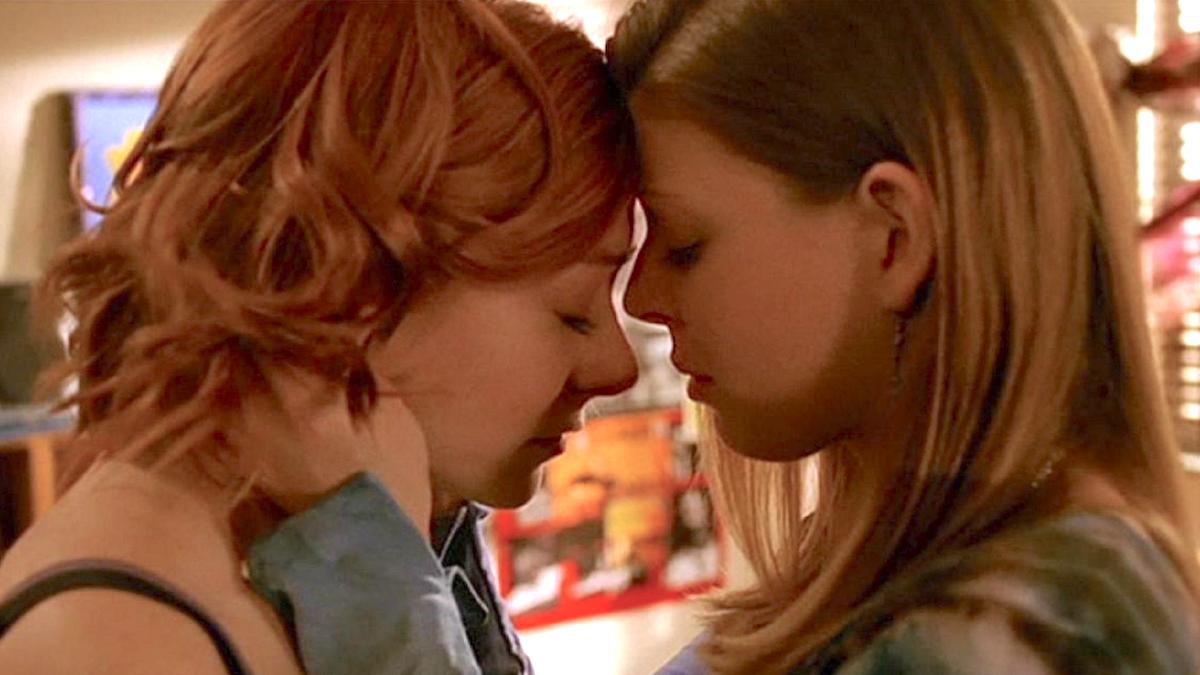
Even 20 years on from its conclusion, Buffy the Vampire Slayer remains transcendent television. A lot of it is imperfect, much of it is problematic, and very occasionally it’s just bad, but sometimes the show is so profound that it makes the entire series more than the sum of its parts. Take “The Body,” for example, the most devastating episode of TV I’ve ever seen. Aka The One Where Buffy’s Mom Dies, it’s not exactly an uplifting hour, and yet hidden away among the heartbreak is something momentous and yet also momentary. When she can’t decide what to wear to the hospital, Willow (Alyson Hannigan) breaks down, causing her girlfriend Tara (Amber Benson) to comfort her. The ensuing tender, loving kiss was the couple’s very first on-screen kiss, making it one of the first kisses between an ongoing lesbian couple in a U.S. TV series (possibly the first).
The decision to include Willow and Tara’s kiss in an episode dominated by a whole other storyline and overtaken by other themes was such a perfect move as it ensures it doesn’t feel artificial and inflated, but genuine. Something everyday yet impactful. No big deal, and yet a scene that meant everything to countless viewers. We can criticize Buffy, even Willow and Tara’s relationship, on a macro level, but this moment in microcosm is as beautiful as it was 20+ years ago. ⏤ Christian Bone
Sook-hee freeing Hideko ⏤ The Handmaiden
Based on the novel Fingersmith by Welsh writer Sarah Waters, Park Chan-wook’s 2016 film The Handmaiden is a critically-acclaimed erotic thriller revolving around sapphic love at the center. South Korea is still a country where Pride events have nearly as many anti-queer protesters as there are attendees, and where LGBTQ+ rep is few and far between; a film like The Handmaiden, one that tells a story of queer love, classism, and imperialism with such nuance, is nothing short of a miracle.
The whole film is worth a watch and spoiling it can ruin the film’s masterfully-written twists and turns, but one scene I’ve always found to be powerful is the one where Sook-hee destroys the manor’s library for Hideko, who had learned to view the library as a prison of her uncle’s making. All of the justified rage Hideko felt from being groomed and abused is cathartically released by Sook-hee in this scene, making for an impactful and tender scene between the two leads. ⏤ Staci White
Kurt coming out to his dad ⏤ Glee
Glee may be remembered as the song-and-dance vehicle that launched Lea Michele and Darren Criss into the stratosphere, but at its core, it tackled themes that not many other network shows were putting center stage at the time. One of them, of course, was homosexuality, and Kurt was the first member of the Glee Club to not only question his own sexual identity, but actually come out to his father. We see gay characters do this all the time now in shows like Heartstopper, Never Have I Ever, and even Ted Lasso, but in 2009, not so much.
I remember watching this episode with my dad when it first aired, wondering how he felt about this rare father-son moment playing out on network television. I flashed back to it in real time when I came out to him a few years later, curious if if it had in any way contributed to his reaction (which was, thankfully, as positive as Kurt’s dad’s). Glee may have had its fair share of camp and cheese, but its fearless inclusion of this scene and others like it also made it groundbreaking. Kurt’s coming out made the impossible possible for so many young queer viewers who would one day do the same, and that’s one of the best gifts Glee could have ever given. ⏤ Josh Conrad
Callie and Arizona’s relationship ⏤ Grey’s Anatomy
From the friendships to the familial ties to the romances, there’s a depth and beauty to the relationships in Grey’s Anatomy. When you look back at 19 seasons of a TV show, it’s hard not to marvel at how so many pieces of the puzzle stand out so clearly; they don’t blur in your mind, with only a few characters and storylines standing out — every piece is memorable.
The series is so good at pulling on our heartstrings, and reminding us that people are worth fighting for. Take the scene when Arizona Robbins has a heart-to-heart with Callie’s dad. He’s never been comfortable (and that’s putting it lightly) with his daughter’s sexuality, even attempting to persuade her to “pray the gay away.” Understanding Callie’s pain, Arizona approaches her dad, only to be told he doesn’t know her well enough to talk about his daughter. This was fine with Arizona, who knew she’d be doing the talking anyway.
Arizona begins fighting for Callie by telling her dad that she was named Arizona after the battleship her grandfather served on. The men in her family stood for honor, courage, and sacrifice, so Arizona was initially hesitant to come out to her own father, lest she disappoint him. But she goes on to assure Callie’s father that she is “a good man in a storm,” someone who fiercely protects those she loves, and that, believe it or not, Callie is still the woman he raised her to be. Doing this removed his ability to question his daughter’s motives, while also communicating that she had a strong woman to look after and love her forever.
This moment beautifully highlights the fearful dilemma so many queer people experience about coming out; it’s a risk to open up about who you are, and break the preconceived notions of those who should love you most. At the same time, the scene highlights the depths of love, and how genuine compassion can blossom when we lay it all on the line, and bare our hearts and truth to those who need to see it. Arizona fought for Callie by telling her father that his daughter was still his little girl, still the one he put band-aids on when she scraped her knee and watched grow up throughout the summers. Callie is still Callie, and the woman who loves her, well ⏤ she helps bring out the best in her. ⏤ Ashley Marie

